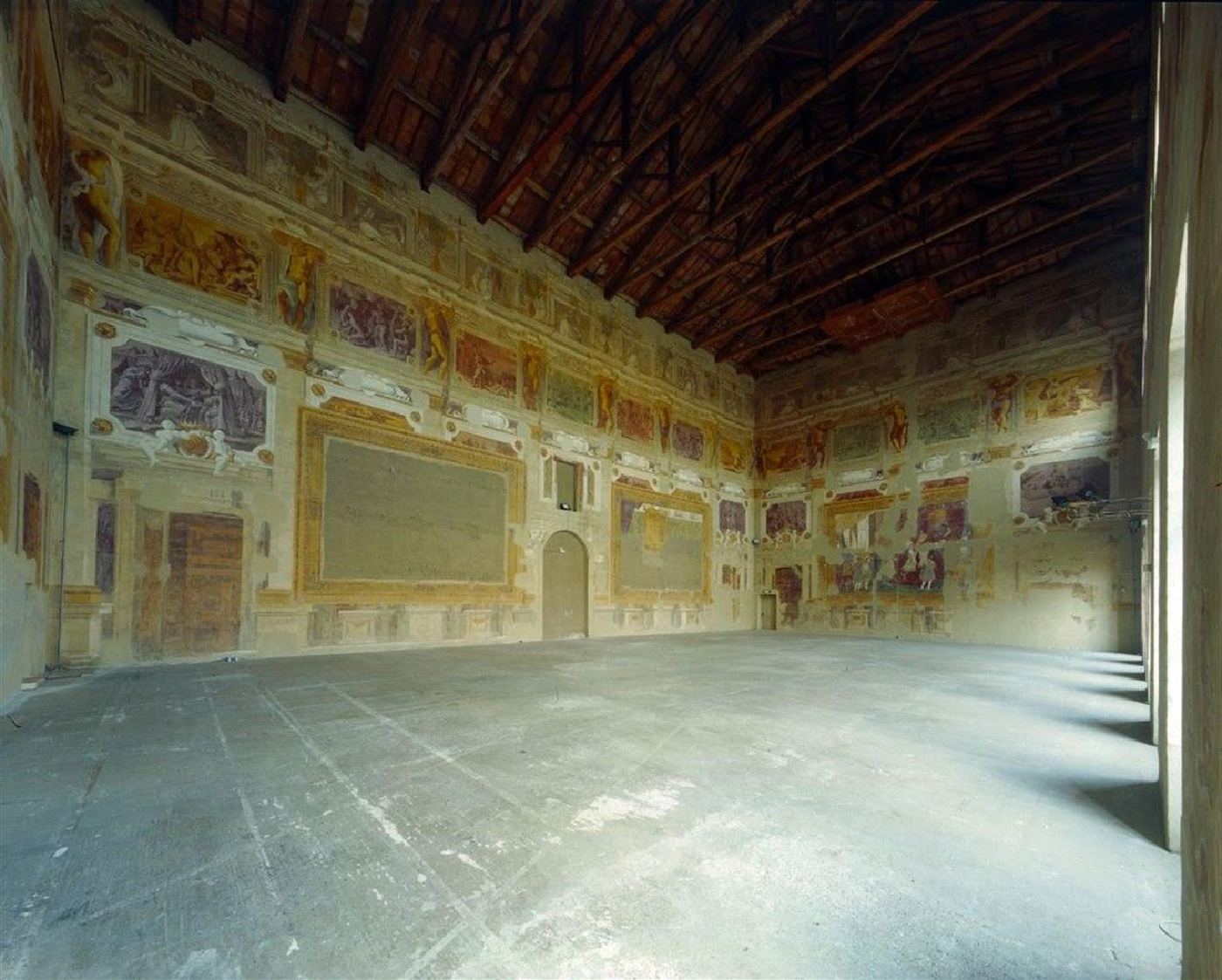34 meters long, 16 wide and 17 high, and it’s completely frescoed. The Salone dei Giganti of Palazzo Bentivoglio is an astonishment to be discovered even if it's empty.

In the upper part of the room there is a long frieze that houses 22 monochrome allegories, alternating with panoplies, which allude to the virtues, magnificence, arts and culture of the Marquis Enzo Bentivoglio (the frieze i salso surmounted by a cornice with denticles – also painted – that once pretended to hold a coffered ceiling, but it’s disappeared now).
The second register presents a series of 26 polychrome half-naked telamons that, support the frieze and accompany with their presence the scenes of the Gerusalemme Liberata, these are framed by ficticiuos stucco and painted with green, amaranth, violet and yellow monochromes.
In the third register are illustrated some episodes of Torquato Tasso’s poems, that is in part visible in the overbunden (anticipated by some putti in ficticious stucco that hold the Bentivoglio’s coats of arms) and partly hidden by four paintings that should have housed four large trompe- l’oeil (it’s missing now) representing the splendour od the Bentivoglio family. Two of the four painting were made in 1628 by Giovanni da San Giovanni (Giovanni Manozzi), a painter from Arezzo and working in Rome.
In the fourth register, at floor level, are frescoed six ficticious doors. At the same time, eight plinths with statues of Roman emperors emerge under the four paintings, at the level of the third register (only six of them remain today).
The room was fresced by Pier Francesco Battistelli, a painter from Ferrara, and his collaborators. The decorative structure is influenced by Carracci’s school and Guercino (Battistelli had been his close collaborator in his youth).

